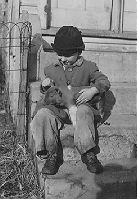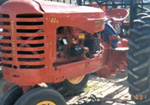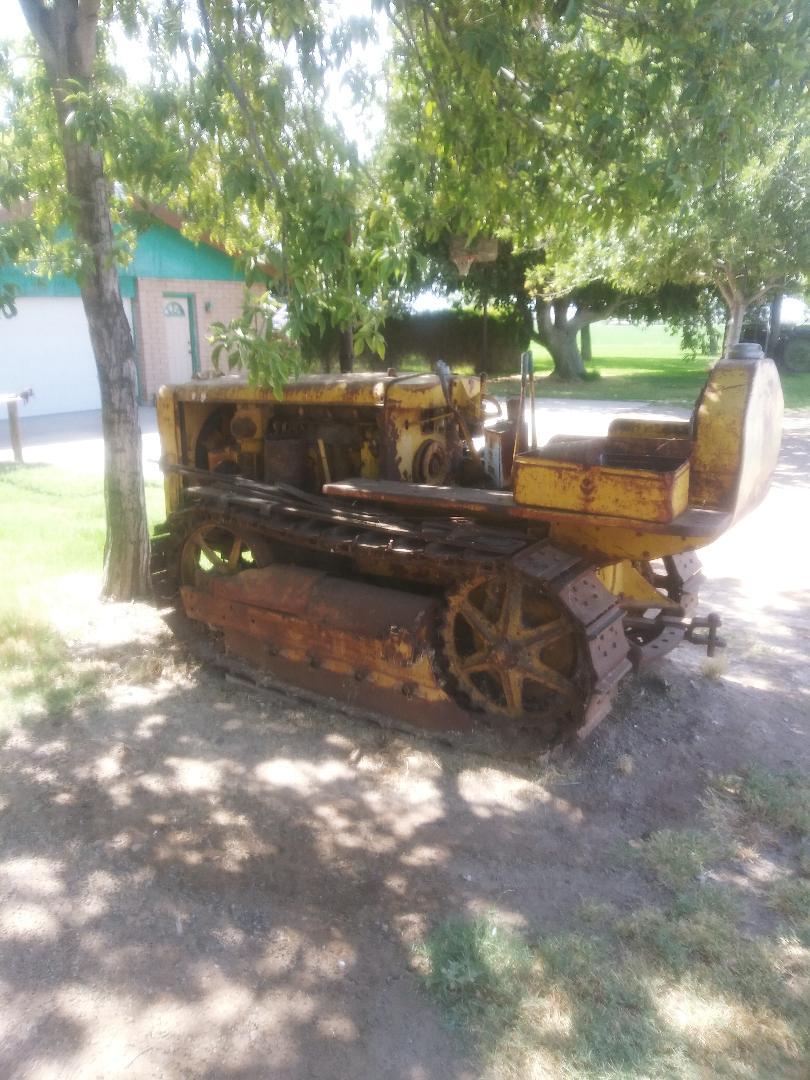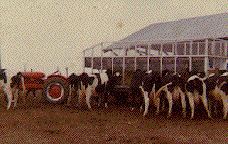
We believed in science: Things were good and getting better. Consider the case of the hybrid hog. Dad read a lot and I was raised on the cutting edge of modern scientific agriculture. In 1946 I was exposed to readers of The Prairie Farmer as a grubby five year old with a hybrid piglet on my lap. Piglet couldn't escape because I had my fingers tightly wrapped around its tail.

By 1945 everyone knew that when two pure-bred strains of corn were cross-bred the resultant offspring would be different from either parent and that, that difference could be corn which yielded more than twice as much grain per acre as either parent. People had written that pigs were like that too and they were right. Hybrid hogs will grow from birth to 200 pounds in 6 months while old-fashioned lard type hogs take almost a year to grow as large. This was a major productivity breakthrough and there was money to be made.
Money changed things. Until 1947 the only new things I remember were tennis shoes and blue jeans just before school began each fall. One early spring day my classmate and I were astonished to hear a roar on the road outside our one-room school. We jumped up and ran to the window in time to see a huge red machine growling down the road. That evening after school I learned we had witnessed delivery of Dad's new self-propelled Massey Harris Combine. New machines and other booty appeared thereafter from time to time.
Like the new red and yellow Massey Harris 44 Diesel tractor that was beautiful even if it never did work quite right. Dad also pioneered use of a Caterpillar tractor for field work and while I'm sure that beast did reduce soil compaction it sure was slow, dirty and loud.


And the 12 cow "Herringbone Milking Parlor." This innovation eliminated the hard labor of carrying 60 pound buckets of milk to the clean room as there was a pipeline through which milk flowed directly from each cow's udder through a filter to a refrigerated 300 gallon stainless steel holding tank. Each day a big truck would back up to the tank and haul the milk away to the city. The milking parlor made it easier (not easy) to keep the milk, cows and building clean and twice as many cows could be milked in the same amount of time.

Like our new 1949 Ford -- which Dad said would go from zero to 50 miles per hour in just 10 seconds. The day we took delivery of that Ford was the first time (one of only two times ever) I heard Dad swear.We all climbed into the new car at the Romey-Hammes Ford Dealership, drove to the first stop light and sat their waiting for the light to turn green as a lady backed her Buick into the side of our brand new car. I believe the expression was "damn it!"
Unfortunately lots of other farmers quickly caught on and started milking lots of cows too. Soon the law of supply and demand took over and the price of milk settled in at $6.40 per hundred-weight -- that was the price in 1963 when we sold the cows. -- just a little less than it sells for today.
Hind-sight is perfectly clear. Looking back it appears building that milking parlor was a mistake. The cow barn was always a warm soul-full place even on the darkest and most bitterly cold winter day. Once the newness wore off that milking parlor was nothing but a heartless stainless steel factory.
But cars are usually fixable and that 49 Ford eventually delivered us to Florida. Once I looked over Dad's shoulder to see how fast we were going (85 miles per hour). That was our first "as a family" trip and what a trip it was.
Newly affluent Howard and Esther bought each child a camera and sisters Ruth and Carolyn and I took lots of pictures which we eventually transformed into photo albums. I don't remember seeing any other children with cameras in 1951.
I came of age when it was
alright to take a vacation to Florida.